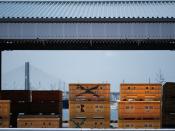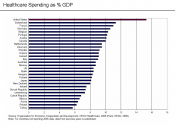Today's rapidly growing economies are classified as Newly Industrializing Countries or NICs and most of the NICs are located in Asia. Despite the current economic crisis, which remains as a mystery, NICs experienced a rapid economic growth over the last 40 years. Economic growth refers to an increase in the productive capacity of an economy.
Japan was the first country to experience a rapid economic growth in Asia. Its economy continued to expand rapidly from the mid-1950s through the 1960s. The annual growth rate averaged close to 11% in real terms for the decade of the 1960s. This compared with 4.6% for the West Germany and 4.3% for the USA in the period from 1960 to 1972. And it was well above twice Japan's own average prewar growth rate of about 4% a year. It is generally agreed that the rapid expansion of Japan's economy from the late 1950s through the 1960s was powered by the vigorous investment of private industry in new plants and equipment.
The high level of saving of Japanese households provided banks and other financial institutions with large funds for heavy investment in the private sector. The rapid increase in capital spending was associated with the introduction of new technology, often under license from foreign companies. Investment for modernization made Japanese industries more competitive on the world market. This created new products and brought Japanese enterprises the benefits of mass production and improved productivity per worker.
Another factor behind Japan's economic growth during this period was the availability of an abundant labour force with a high level of education. Reasonably large numbers of young people entered the labour force every year. There was also a heavy migrartion of agricultural workers to manufacturing and service jobs located mostly in the larger cities. In 1960, the Japanese government...


